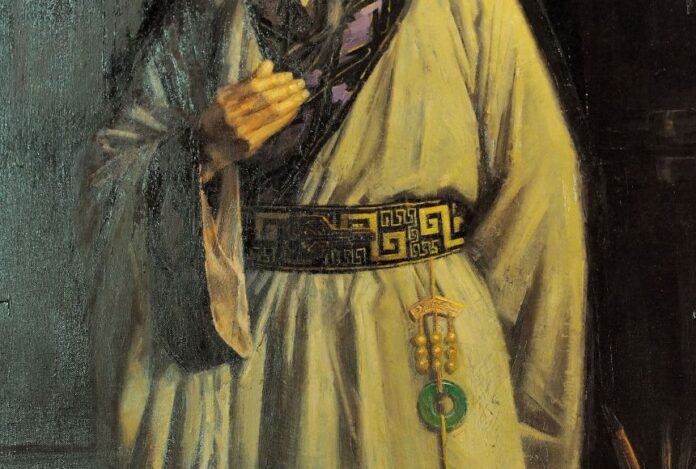
Article Excerpt:
The Art of War, an influential document written by the ancient Chinese military strategist Sunzi (also known as Sun-Tzu), is one of the first known treatise on warfare strategy in history. Known in Chinese as Bingfa, this guide features information about various battle maneuvers and tactics, as well as strategic advice on collecting information about the enemy’s location and battlefield terrain before attacking.
It is hard to know exactly when The Art of War was written, but most scholars think it was written between 475 and 221 B.C.E., during the Warring States period. Scholars also cannot be sure about the details of the life of its author, Sunzi, but they believe he was a general working for the Wu state. It is clear that whatever Sunzi’s life experiences were, he had a great deal of knowledge about warfare and tactical training.
The premise of The Art of War is that war should be avoided with diplomacy. If it cannot be avoided, it should be fought strategically and psychologically to minimize damage and the wasting of resources. Warfare should only be a last resort and heading into battle is already admitting a kind of defeat. Sunzi’s strategy in dealing with foes was a combination of peaceful resolutions and aggressive warfare. This mirrors the Taoist principals of yin and yang (or opposing but complementary forces). Sunzi recommended that every leader follow the Tao (or the natural order of the universe) as a main component of successful leadership.
The Art of War has remained relevant over the years because it is about strategy and tactics rather than specific warfare technology. It has influenced leaders all over the world, not only in warfare but in many areas of life, including business. Modern leaders such as the former chairman of the Chinese Communist party and one of the founders of the People’s Republic of China, Mao Zedong, cited The Art of War as part of their military success.
Analysis:
Sun Tzu’s document, The Art of War, remains relevant over thousands of years after its completion. The guide details different strategies that can be applied to warfare, but also in many other areas. Sun-Tzu emphasizes war should be avoided with diplomacy, and that preparation is paramount. Thorough planning is essential and The National Geographic Society writes that “heading into battle is already admitting defeat.”
After taking time to consider this claim, I found my conceptions of warfare to be challenged. Was every war “victory” ever earned really a victory at all, or were they simply a result of poor diplomacy– a last resort option?
Furthermore, Sun-Tzu’s guide seeks to “minimize damage and the wasting of resources” in the event of war. I believe that these efforts are effectively translated into strategic efforts tor alternate paths, such as business or design.
Reflecting Sun-Tzu’s guide within the design process would entail thorough planning (research plan, establish timelines, evidence-informed decision-making) and a strategic approach to the entire process in order to conserve resources (time, money, effort). When ill-informed decisions are made, the resulting product or service will likely be ineffective and fail.



